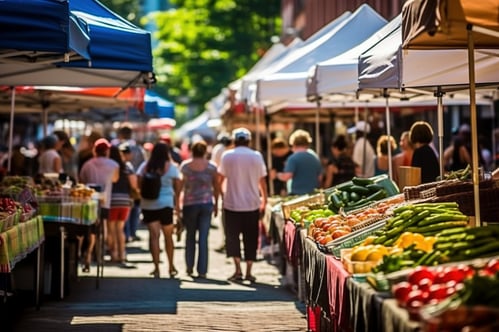Courthouses are more than just buildings where legal proceedings take place; they play a pivotal role in urban planning. Courthouse design and placement can significantly impact the fabric of a city, influencing everything from civic identity to community accessibility and engagement. Courthouses can become symbolic landmarks that reflect the culture of the surrounding community. Constructing a courthouse in an urban setting can also spur economic development.
As a court planner, I’ve visited dozens of courthouses nationwide. I always find it so interesting to see how courthouses interact with their larger surroundings. Let’s explore a few key connections I’ve observed between courthouses and the urban environment where they’re located.
Civic Identity and Symbolism
Courthouses often serve as architectural symbols of justice and democracy. The visibility of courthouses in the urban landscape can serve as a daily reminder of the presence and importance of the justice system. Their design can reflect the values and aspirations of a community, contributing to the city's identity.
Undoubtedly, the courthouses that have left the most lasting impression on me are the ones whose architecture and public art are reflective of the character and history of the community they serve. For new courthouses, this can often be achieved by soliciting the input of community members on potential design options. Artwork can also be displayed to represent the local community.
Below is an image of public art displayed in a Tacoma, Washington courthouse created by Dale Chihuly, a well-known Tacoma glass artist. The prominent display is visible from the building’s exterior - what a great way to reflect the local culture!

Iconic courthouses that are grandeur in nature can become landmarks, representing the rule of law and the commitment to fairness and equity. In this way, courthouses help shape a city’s image and reinforce its civic pride. The presence of these buildings is not just about aesthetics; they embody the principles of justice and the importance of the judicial system in society.
Urban Regeneration and Economic Development
Urban planning for courthouses often involves redeveloping existing buildings. Providing a new, vibrant use for an older building can spur economic development in the surrounding area. Their placement and design can help courthouses anchor civic centers, which can become hubs of other community services and amenities.
The economic impact of courthouses extends beyond construction. By situating a courthouse in a central or urban renewal area, planners can create jobs, stimulate economic activity, and attract investment. Property values in the surrounding community can increase. Courthouses draw people to the central business district and drive the need for local law firms, restaurants, parking facilities, and other services. I’ve even visited a couple locations in different parts of the country where a bustling farmers market is held on a plaza outside the courthouse on weekday afternoons.

Accessibility and Public Engagement
A well-designed courthouse is not only functional but also accessible to the public. Effective urban planning ensures that courthouses are located in areas that are easily accessible by various modes of transportation, including public transit, biking, and walking. Accessibility also involves creating welcoming spaces for all members of the community.
Courthouses can serve functions that extend far beyond just holding legal proceedings. For example, their lobbies and meeting spaces can be used to host community functions and law libraries can be used to hold training events for the local legal community.
By integrating courthouses into accessible and inclusive urban environments, cities enhance public engagement with the justice system and promote greater civic participation.
The Integrated Courthouse
In summary, courthouses play a crucial role in urban planning by embodying civic values, driving economic and social development, and ensuring accessibility for all citizens. Their integration into urban settings helps to reinforce the principles of justice and democracy while contributing to the overall vitality of cities. By thoughtfully weaving these essential institutions into the fabric of a city, we not only enhance their functionality but also promote a sense of community and civic engagement.



.jpg)

.jpg)
.jpg)
.jpg)
.jpg)
.jpg)
-1.jpg)
.jpg)
.jpg)

